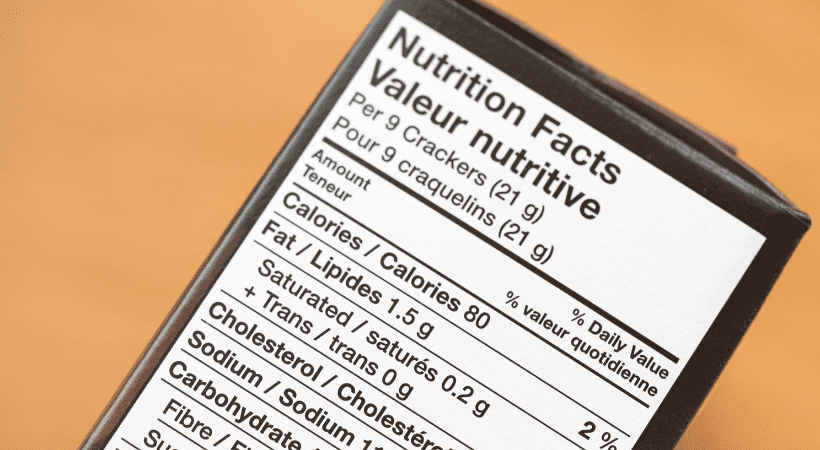FDA Regulations for Labelling ‘Gluten-Free’ and ‘Free-From’Foods in the US
FDA Regulations for Labelling ‘Gluten-Free’ and ‘Free-From’Foods in the US
With allergens on the rise worldwide, and more people opting for more control over what they consume, it has never been more important to trust our food labels and make confident decisions about what we consume.
New innovations in the ‘free-from’ market are providing more safe choices to those with food allergies or intolerances. However, due to a lack of standardization across the market for the use of ‘free-from’ health claims, it can also be difficult for consumers to understand which products will be safe for them and which might not. In this blog, our US experts share their insights on making ‘free-from’ and ‘gluten-free’ claims.
What does the term ‘free-from’ mean?
The term ‘free-from’ suggests that a product is produced without ingredients that you might typically find in the standard recipe, such as gluten in bread. The term ‘free-from’ lacks standardization across the food and beverage industry which has resulted in different interpretations among consumers.
For many consumers, free-from means being free from some, or all, of the major serious allergens, including nuts and milk. To others, the term ‘free-from’ might be less about the allergen aspect and more about specific dietary requirements, such as free from palm oil or additives such as artificial flavors, colors and preservatives.
Research from Mintel revealed that 84 percent of American free-from consumers buy these products because they are seeking out more natural, less processed foods. Within this research, 43 percent of consumers agreed that free-from foods are healthier than foods without a free-from claim1.
With the term open to interpretation, consumers may pick up a product understanding it to be one thing, but in fact, it is another, which poses a particular risk to allergenic consumers.
Does the FDA regulate the term ‘free-from’?
There is no regulation in the US for the use of ‘free-from’ health claims with the exception of ‘Gluten-Free’.
What are the FDA regulations for ‘gluten-free’ claims?
Gluten is naturally occurring but it can be extracted, concentrated, and/or added to food or other products. The ingredient can add protein, texture and flavor, but it also works as a binding agent to hold processed foods together.
Some consumers can have varying levels of intolerance and allergy to gluten including a condition known as Celiac Disease, which is when the immune system attacks the body’s own tissues when gluten is consumed, preventing any nutrients from being absorbed.
Adding the statement that implies a product is ‘Gluten-Free’ to a food label is a voluntary contribution, often at the manufacturer’s discretion.
If ‘Gluten-free’ is used, it must comply with the FDA’s regulations, which govern the majority of food labelling requirements in the US:
- Products must not contain more than 20 parts per million (ppm) of gluten
(Other countries and international bodies use this same criteria)
- Must not contain any wheat/rye/barley or crossbreeds of these grains
- Must not contain any ingredient derived from wheat/rye/barley that hasn’t been processed to remove gluten
- Must not contain any ingredient derived from wheat/rye/barley that has been processed to remove gluten, but more than 20ppm remains.
These regulations apply for any term that implies the product does not contain gluten such as No Gluten / Free of Gluten / Without Gluten.
Whether manufactured or naturally occurring, brands using the statement on-pack must meet the same criteria listed above by the FDA in order for it to be approved to bear the ‘Gluten-Free’ statement. It’s also important to remember that “wheat-free” does not necessarily mean “gluten-free.”
For more information, please see the FDA’s regulations on Gluten and Food Labelling.

Author: Edward Round
I recently joined Ashbury, bringing with me a decade of experience in marketing across B2B, B2C and SAAS sectors, including finance, insurance and software. My role as Marketing Manager involves managing Ashbury's market positioning and promotional strategies. I work closely with the Client Development and Sales Teams on tasks ranging from targeted outreach programs to creating brand collateral. I thrive on the blend of creativity and analytics that marketing offers, using both to drive successful campaigns and data-driven decisions.
Next reads
The Peanut Diaries: School and Social Occasions
The Peanut Diaries: Navigating Social Events and Celebrations with Food Allergies
The Peanut Diaries: A Parent’s Journey to Uncovering their Child’s Allergy
Redefining Healthy: What the FDA’s New Rules Mean for Food Labels and Nutrition Claims
Keep up to date with our latest insights
Subscribe to our mailing list to stay in touch with the latest news, insights and updates from Ashbury




